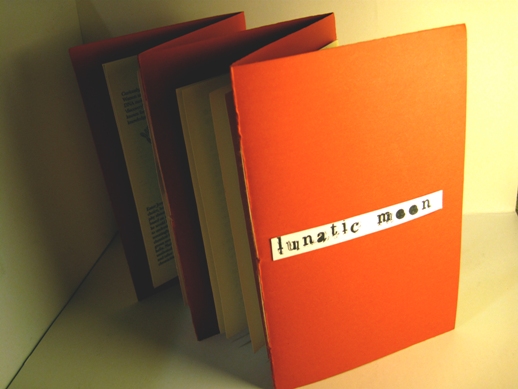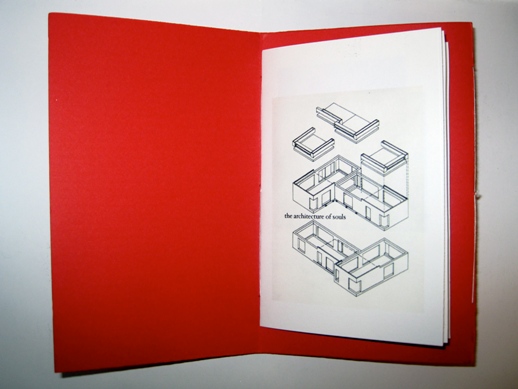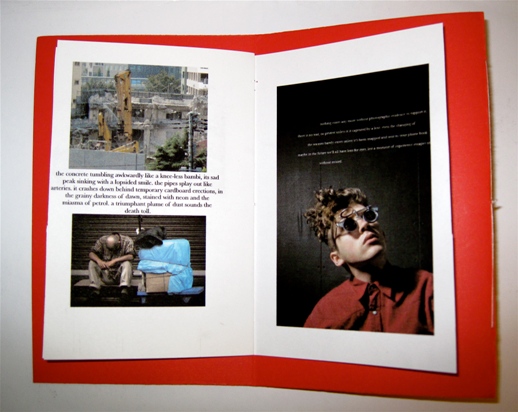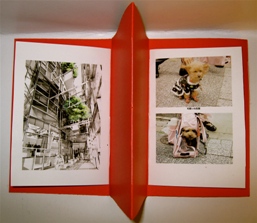Zines: The Saviour of Print
I’d been pondering making a zine for years. Every time the mediocre English summer rolled around, I plotted and planned and scribbled, but never got near to publishing. Then, in April this year, I met the Zine’s Mate collective, which finally spurred me on to get it together and produce something to meet the deadline.
My original motivation, however, was probably similar to a lot of zine-makers; part sentimentality, part nuttiness and part confidence issues. Sentimentality because I have a certain fetish for paper and the printed format, and wanted to make something tangible rather than a mess of bytes. Nuttiness because only a control freak can be focused enough to make the whole of a zine themselves, beginning to end. And confidence issues because while you lack faith that any publisher would accept your work, you somehow trust yourself to make something readable and popular.

There’s been a lot of noise made recently about the print industry and its supposedly imminent end; sales of newspapers, magazines and books are definitely falling as more people chase convenience and ‘pure’ information on the internet or mobile phones. But there is a sense that we are over-saturated with dull, meaningless blogs and haphazard streams of temporary information, and a kind of longing for good old-fashioned paper formats. Self-publishing enthusiasts and zine makers are therefore quite like vinyl obsessives, scorning convenience and hanging onto something more awkward for the rather nostalgic sense of tactility it offers.
Oddly enough, the rapidly shrinking audiences for paper formats didn’t really worry me when I thought about making a zine. Most people warned me that I had to carefully consider my ‘target niche’. To be honest, I didn’t give a damn. The beauty of making a zine is not only that you can indulge your control-freakiness, but also that you can write exactly what you want, without having to answer anyone. Zine makers usually sing the joys of ‘punk publishing’, telling people how easy it is: write, print, staple, distribute. But this means that an awful lot of zines are just like blogs: spur-of-the-moment brainfarts that are aesthetically unappealing and ultimately disposable.


I have to admit that I was never really engaged in the ‘zine scene’ in England, finding too many of them shoddy print-outs on some kind of toilet paper with perilous staples poking out all over the place and a particularly insidious finger-staining ink. The fonts were always stupidly small or blurred or ugly, as if warning you that the content wasn’t worth reading.
Fortunately, there seems to still be a kind of reverence for paper in Japan that made me want to raise the bar. Walk into any book shop here and you’ll be confronted with a plethora of beautifully printed and bound books in a variety of paper and textures. I’m all for the punk aesthetic, but I think if you want to beat the doom-mongers of the print industry, you have to make something that is worth making in 3D; something for the paper fetishists who covet real, tactile objects. Those who want convenience will always have the internet.

I’ll admit that it was a struggle to make, and I won’t easily forget the many hours spent painstakingly formatting, printing, guillotining and sewing them together. But it was worth it. Handing the final ten into the zine fair, I felt somewhat like a proud parent waving their child off on their first day of school. Strangely, I really didn’t care about selling them or recouping the cost of making them, as I really wanted to keep them myself, or give them to people I knew.

My worst nightmare is a future dominated by Kindles, iPhones and mobile phone novels, with print consigned to the rubbish heap of history. But something makes me think that people just won’t allow that to happen. There is something very satisfying about holding reading material in your hands that a screen will never capture. The turnout at Zines’ Mate would also seem to confirm this, with most of the zines on show beautifully put together and well worth cherishing. The beauty of making a zine to me is therefore not the simplicity or the ease of it, but rather the gratification you get from making something material. And if enough people are motivated enough to publish what they like and care about, we might just pull print back from the brink.
Sophie Knight
Sophie Knight



